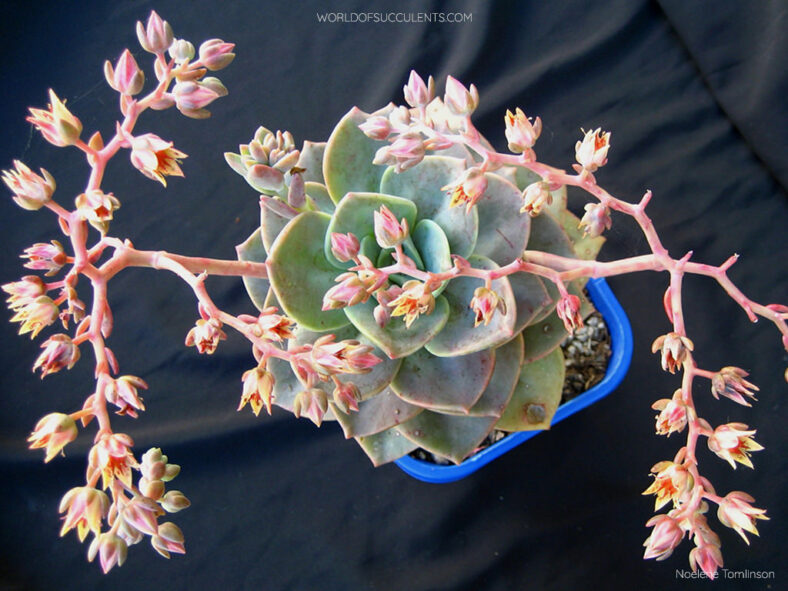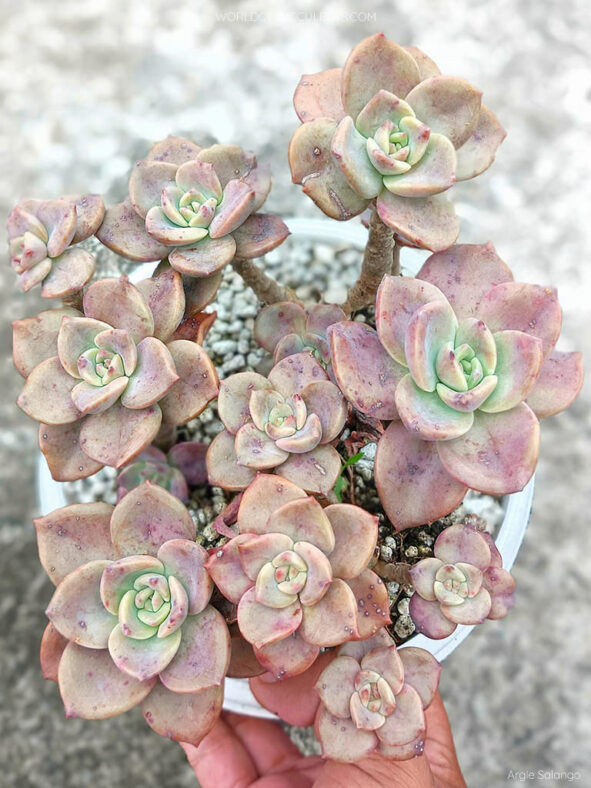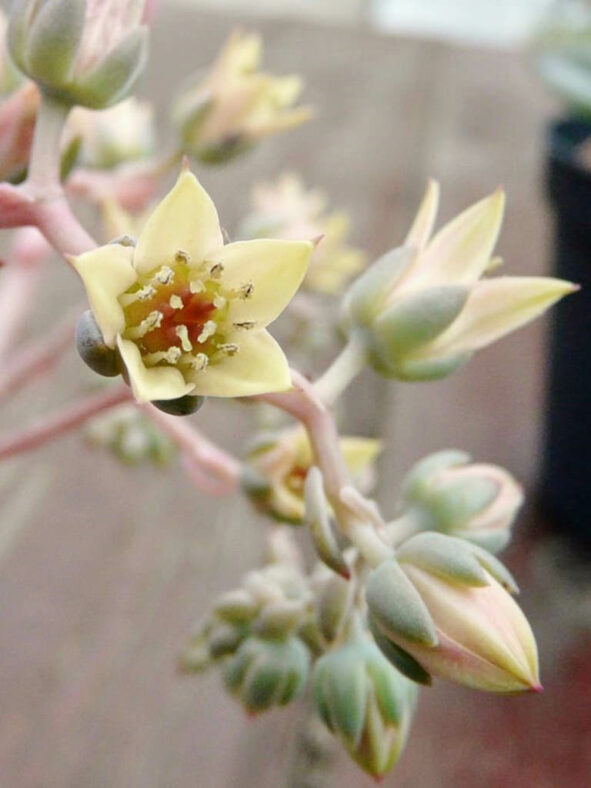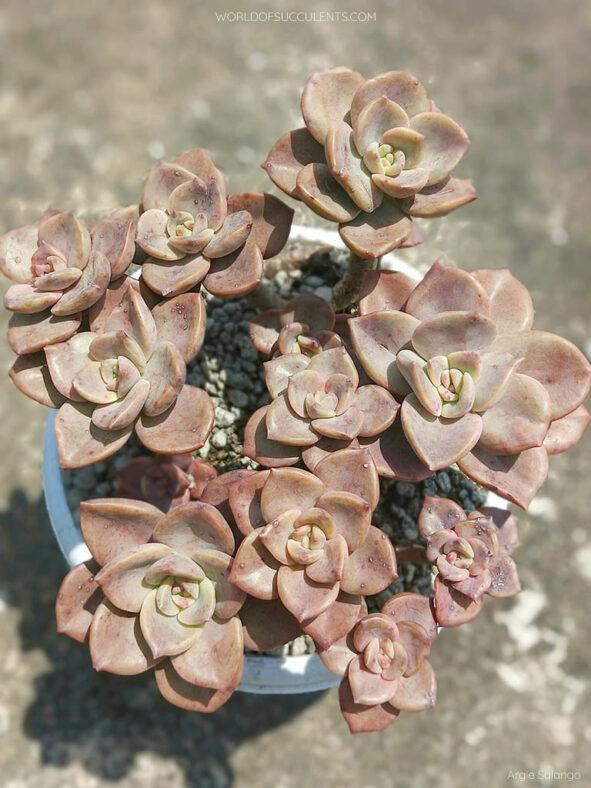Scientific Name
×Graptoveria 'Albert Baynes'
Synonym(s)
Graptopetalum baynesianum, Echeveria baynesii, ×Graptoveria baynesii
Scientific Classification
Family: Crassulaceae
Subfamily: Sempervivoideae
Tribe: Sedeae
Nothogenus: ×Graptoveria
Origin
×Graptoveria 'Albert Baynes' is an intergeneric hybrid that results from a cross between Graptopetalum paraguayense and an unknown Echeveria. It was created by Albert Baynes of Shipley, Yorkshire, United Kingdom, and was first published and named by J. C. van Keppel in 1979.
Description
×Graptoveria 'Albert Baynes' is a beautiful, branching succulent that forms compact rosettes of fleshy leaves at the end of the branches. It often branches at the base and higher up the stems. The rosettes can reach up to 6 inches (15 cm) in diameter. The leaves are bluish-green with reddish blotches at first but later become more uniformly pinkish-red. They are obovate to ovate and can measure up to 3.2 inches (8 cm) long and 1.6 inches (4 cm) wide.
In summer, ×Graptoveria 'Albert Baynes' produces bell-shaped flowers that are yellow inside and somewhat pinkish outside. The corolla lobes are recurved at the tip. The flowers appear in 3 to 5 scorpioid cymes (also called cincinni) on stout, erect stalks with thick bracts. The flower stalk can grow up to 8 inches (20 cm) tall.

How to Grow and Care for ×Graptoveria 'Albert Baynes'
Light: ×Graptoveria 'Albert Baynes' requires full sun to partial shade for optimal growth. Therefore, place it near the brightest window in your home. In addition, if you are moving the plant outside in spring, do it gradually and avoid exposure to intense afternoon sun.
Soil: Soil that drains quickly is most important for growing a healthy succulent. While many growers prefer to create their own soil mix, commercial soil for succulents will work fine.
Temperature: High temperatures are not a problem as long as there is plenty of fresh air, but ×Graptoveria 'Albert Baynes' is a tender succulent and must be brought indoors if there is a risk of freezing temperatures. It grows best in USDA Plant Hardiness Zones 9a to 11b, with average minimum winter temperatures ranging from 25 to 50 °F (-3.9 to 10 °C).
Watering: During the growing season, the "soak and dry" method is the preferred schedule for this plant. Water deeply and then let the soil completely dry out before watering again. Water sparingly during the winter, only enough to keep the plant from shriveling.
Fertilizing: Although it can grow well without fertilizer, the plant may benefit from extra nutrients. Feed only during the growing season and use a water-soluble fertilizer diluted to half the recommended strength.
Repotting: If growing it in a container, repot as needed in spring or early summer, but ensure the soil is dry before you start.
Propagation: The easiest way to get a good-sized new plant is by taking stem cuttings, but ×Graptoveria 'Albert Baynes' is also easy to propagate by leaves. Spring and summer are the best time to separate offsets.
Learn more at How to Grow and Care for Echeveria.
Toxicity of ×Graptoveria 'Albert Baynes'
×Graptoveria 'Albert Baynes' has no toxic effects reported. But although it is safe for growing around children and pets, eating the plant is not advisable.
Forms of ×Graptoveria 'Albert Baynes'
Links
- Back to nothogenus ×Graptoveria
- Succupedia: Browse succulents by Scientific Name, Common Name, Genus, Family, USDA Hardiness Zone, Origin, or cacti by Genus
Photo Gallery
Click on a photo to see a larger version.


